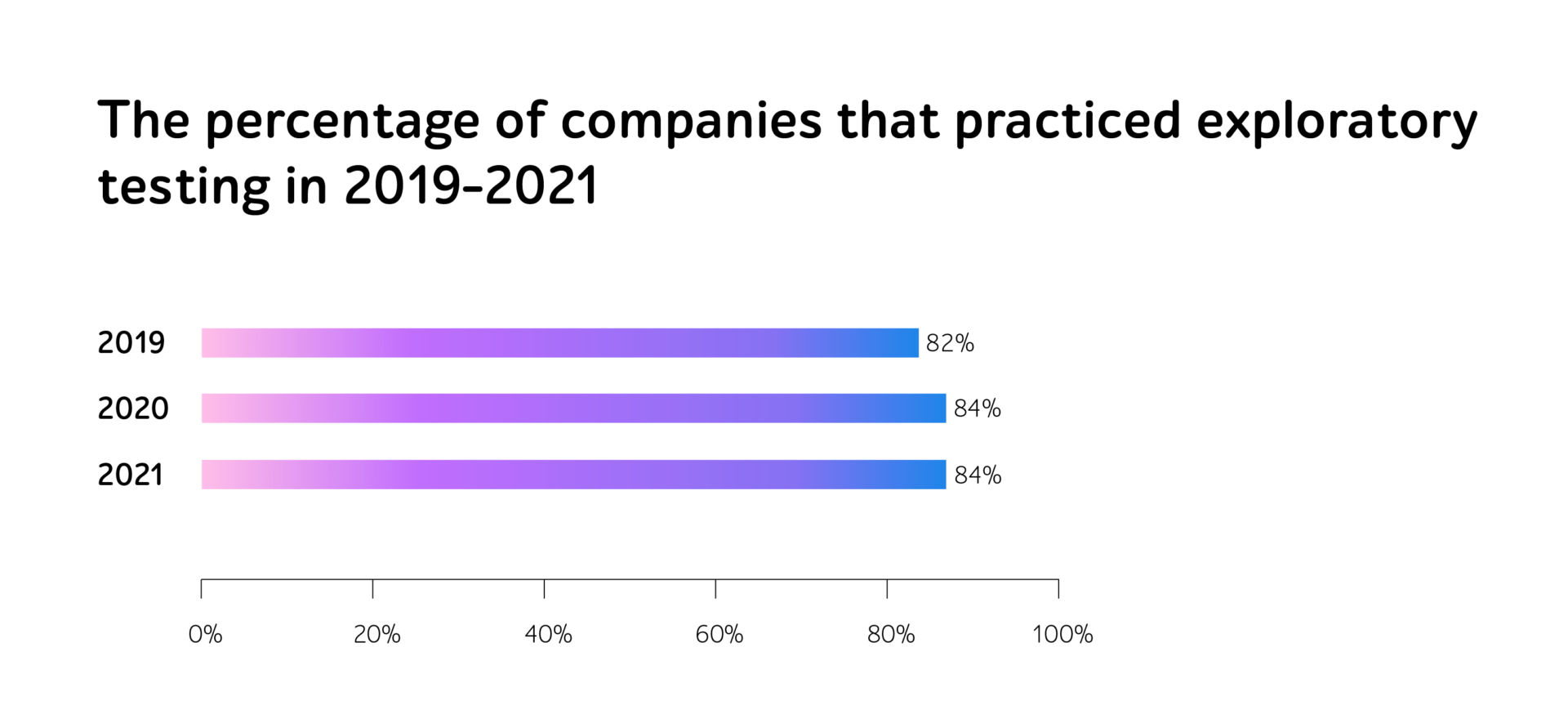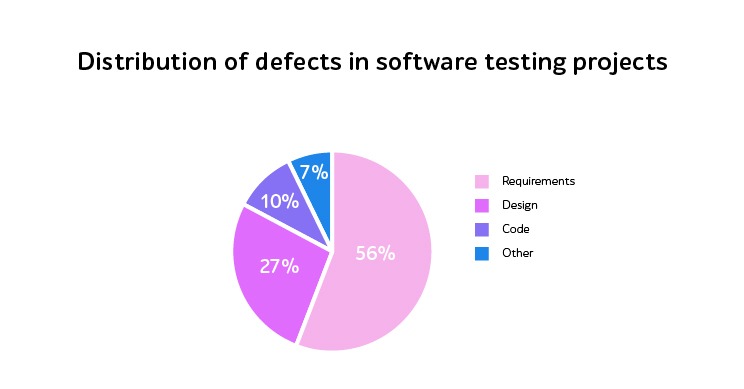
The A to Z guide to functional testing
It seems that we’re living in the era of total automation. Aren’t you or your friends, partners trying to automate as many processes as possible to maintain leading positions in the IT market and deliver quality at speed?
Wait! But what about manual testing? It’s equally crucial, and in some situations, indispensable.
In the article, let’s discover some aspects of functional testing: its importance for business, reasons to conduct it manually, key types to perform, and steps to introduce it correctly.
Why does functional testing matter?
Speaking of functional testing, two words come to mind — functions and requirements. It allows simulating the behavior of actual users and identifying critical defects in the software functionality.
To understand how hazardous bugs may be in production, let us recall one situation. TikTok users have experienced a dramatic drop in their followers and the number of views. They have zeroed out. Owing to introducing a new feature to the software, others failed to work correctly. Just imagine how much time it took to fix the glitch and how many impatient consumers switched to other social networks.
A pretty good example to showcase what end users do feel when the IT product doesn’t operate as intended. (According to the Global State of Customer Service, 58% of Americans just leave.)
So, what are the reasons to opt for functional manual testing?
The main purposes are to make sure that the features are operable, have fewer critical errors, and provide the expected results. Let’s look at the basic reasons why companies test their IT products manually.
Reason #1. Cost-effectiveness
Manual testing doesn’t require significant investments in the initial stages. It’s also a good option along short-term projects and when the app frequently changes, helping businesses cut down on additional finances (and no need to buy and maintain tools).
Reason #2. Usability from human perspective
Is the interface of the app user-friendly? Are the navigation structure and the search intuitive? And what about menu bars, buttons, and other elements? You get answers to these questions only after verifying the usability of the IT solution. When checking the software from an end-user angle, QA engineers find flaws in the user journey, interface, and information architecture of the software.
Reason #3. Flexibility
With manual testing, QA experts check the software immediately after making minor changes to it and there is no need to rewrite the code. An adaptive and convenient approach in today’s realities.
Functional testing types: what to choose to produce top-line software
Let’s see what types of functional tests are extremely important to release the software with stable functionality.
Type #1. Exploratory testing
In most cases, automated tests check only pre-written user stories. But what if we want to go beyond test scenarios and test unscripted situations? To do this, organizations introduce exploratory testing to find unexpected bugs that no one could foresee.
Such testing involves simultaneously studying app’s functionality, designing test cases on the fly (without documenting them), and then immediately executing them. A superpower!
It’s all about discoveries and cognitive thinking. According to the State of Testing Report 2021, 84% of companies practiced this type of testing in 2021.

Source: State of Testing Report 2021
Type #2. Interface testing
It helps ensure that the user interface meets the requirements, and the navigation is comfortable for end users — elements (colors, sizes, buttons, and others) are arranged logically, fonts are readable, text is aligned proportionally, pictures are displayed well.
This type of testing helps better understand user interaction with the IT product, allows testing gesture movements on various devices (not always possible with test automation scripts). All of these help enhance user experience (and we remember that according to the Forrester Research, boosted UX increases the customer conversion rate by 400%).
Type #3. Integration testing
Let’s have a look at one example. The X eCommerce app has dozens of modules: registration form, product catalogue, shopping cart, payment system, etc. Imagine that the users have completed all the necessary actions to make a payment, are waiting for their delivery, and eventually are ready to enjoy the purchases. Not so fast. They fail to do it due to a bug in the modules integration, preventing them from making an online transaction. Kind of a mess.
The outcome: the-X-eCommerce-app company obtains less profit and more losses wasting time on fixing the error.
Integration testing made on time helps detect major defects of integrated elements and produce an IT solution with all the components interacting correctly. And making users happy, of course.
Type #4. System testing
During interaction testing, you verify only two modules and their integrity between each other in isolation. System testing allows checking whether the IT product works as intended when all its modules are combined. It helps detect defects related to incorrect operation of app’s functions and errors throughout the entire user flow and show how the system behaves.
It also reveals problems with the environment compatibility, inconsistency with specifications, bugs in unexpected combinations of user data, failures in unforeseen user scenarios, and poor usability.
Type #5. Requirements-based testing
According to the research by IJIEM Journal, about 56% of defects are caused by poorly written, inaccurate, and ambiguous requirements. So, software specifications may be the reason behind the low quality of the IT product.

Source: IJIEM Journal
But how to make sure that the requirements are well-composed? Bear in mind the following characteristics:
- Comprehensiveness (they contain extensive information about the system)
- Clarity (they clearly define what functions the app performs)
- Consistency (they have no contradictions)
- Modifiability (they are changeable when needed)
- Traceability (they verify the connection between the requirement and other project artifacts).
Type #6. User acceptance testing
To determine whether the software is ready for post-exploitation, it’s necessary to confirm that it matches the acceptance criteria. By creating the environment close to real conditions, the company checks system’s reliability. So, this testing helps prepare the app for production and ensure that it’s defect-free.
Concerning user acceptance testing, this is the final stage where end users come into play to test the product and define:
- The way the IT solution works in real conditions
- The results and whether they correspond with the pre-defined ones
- The defects that hinder smooth app navigation.
Step-by-step scenario of functional testing: 5 basic phases
Now, when we know what types of functional testing are vital, let’s concentrate on 5 main stages, assisting in establishing a proper QA process.
1. Preparing
The project begins with defining business goals that help create a testing roadmap, select the right tools and QA practices to achieve the desired results.
2. Analyzing
This is the time to analyze functional and business requirements, develop a test strategy, plan, and test cases — all done to determine whether the software meets the specification. This phase allows identifying all possible risks in advance and taking appropriate measures to mitigate them.
3. Testing
When test cases are ready, a QA team can start verifying the software functionality. Depending on the app specifics and the project needs, specialists select the appropriate tools and types of testing to carry out.
When conducting tests, they attribute different statuses to them (passed, failed, in progress, not run, blocked) to check whether the actual outcomes correspond with the expected ones.
4. Optimizing
QA experts optimize test execution processes to reach defined deliverables within the given timeframe, check that everything is running as planned and there are no glitches.
5. Reporting
At this stage, experts document the obtained results to show a list of found errors along with recommendations for improving the quality of the IT solution.
In a nutshell
Among the reasons to conduct functional testing are cost-effectiveness, usability from human perspective, and flexibility.
Exploratory, interface, integration, system, requirements-based, user acceptance testing are amid those types that are better to perform manually. They help businesses to produce a stellar IT solution and check its functionality.
To set up a well-tuned QA process, companies may follow five basic steps: preparing, analyzing, testing, optimizing, and reporting.
In case you want to introduce functional testing, reach out to a1qa’s experts to get professional QA support.








